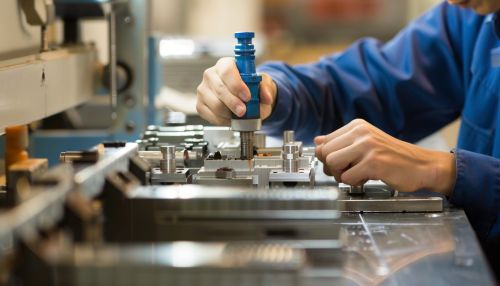Visual Inspection
Introduction
Visual inspection is a common method of quality control, data acquisition, and data analysis. In its most basic form, visual inspection is a process where an individual uses their eyes to look for defects or anomalies in a product, system, or component. This method of inspection is often used in industries such as manufacturing, construction, and engineering. It is a critical part of the quality control process, ensuring that products meet specified standards and that systems function as intended read more.


Types of Visual Inspection
There are several types of visual inspection, each with its own set of techniques and tools. These include direct visual inspection, remote visual inspection, and automated visual inspection.
Direct Visual Inspection
Direct visual inspection involves the inspector physically examining the item or system in question. This is the most common type of visual inspection and is often used in conjunction with other inspection methods. Direct visual inspection can involve the use of simple tools like magnifying glasses or mirrors to aid in the inspection process read more.
Remote Visual Inspection
Remote visual inspection (RVI) involves the use of specialized equipment to inspect areas that are difficult or dangerous to reach. This can include the use of borescopes, endoscopes, or remotely operated vehicles (ROVs) read more. RVI is commonly used in industries such as aviation, power generation, and oil and gas.
Automated Visual Inspection
Automated visual inspection (AVI) involves the use of machine vision systems to automatically inspect products or components. These systems use cameras and computer algorithms to detect defects or anomalies. AVI is commonly used in manufacturing, where it can provide a high level of accuracy and consistency read more.
Techniques and Tools
A variety of techniques and tools are used in visual inspection, depending on the type of inspection and the specific requirements of the task. These can range from simple tools like flashlights and magnifying glasses to more complex equipment like borescopes and machine vision systems.
Lighting
Proper lighting is crucial for effective visual inspection. The inspector must be able to clearly see the item or system being inspected, and different lighting conditions can reveal different types of defects. For example, bright, direct light might be used to reveal surface defects, while backlighting might be used to reveal internal defects read more.
Magnification
Magnification tools like magnifying glasses or microscopes can be used to inspect small or detailed parts. These tools can reveal defects that might be missed by the naked eye read more.
Color and Contrast
Color and contrast can be used to reveal defects in certain types of materials. For example, dye penetrant inspection involves applying a brightly colored dye to a surface, then wiping it off. Any remaining dye indicates a defect read more.
Remote Inspection Tools
Remote inspection tools like borescopes, endoscopes, and ROVs can be used to inspect areas that are difficult or dangerous to reach. These tools often include a camera and a light source, and they can be controlled remotely to navigate through complex structures read more.
Machine Vision Systems
Machine vision systems use cameras and computer algorithms to automatically inspect products or components. These systems can provide a high level of accuracy and consistency, and they can be programmed to detect specific types of defects read more.
Applications
Visual inspection is used in a wide range of industries and applications, from manufacturing and construction to medicine and research.
Manufacturing
In manufacturing, visual inspection is used to ensure that products meet specified standards. This can involve inspecting individual components, finished products, or even the manufacturing process itself. Defects or anomalies can indicate problems with the manufacturing process, which can then be addressed to improve quality and consistency read more.
Construction
In construction, visual inspection is used to ensure that buildings and structures are built correctly and safely. This can involve inspecting materials, workmanship, and compliance with building codes. Defects or anomalies can indicate problems that need to be addressed before the construction process can continue read more.
Medicine
In medicine, visual inspection is used in a variety of ways, from diagnosing diseases to performing surgeries. For example, doctors often use visual inspection to look for signs of disease or injury. Surgeons use visual inspection, often with the aid of specialized tools like endoscopes, to guide their work read more.
Research
In research, visual inspection can be used to gather data, test hypotheses, or observe phenomena. This can involve a wide range of activities, from observing animal behavior to inspecting geological samples read more.
Advantages and Disadvantages
Like any method of inspection, visual inspection has both advantages and disadvantages.
Advantages
Visual inspection is a non-destructive testing method, meaning it does not damage or alter the item being inspected. It is also a relatively simple and straightforward method, requiring little specialized equipment or training. In many cases, visual inspection can be performed quickly and easily, making it a cost-effective method for many applications read more.
Disadvantages
Despite its advantages, visual inspection also has some limitations. It is largely dependent on the skill and experience of the inspector, and it can be subjective. Visual inspection can also be limited by physical constraints, such as the size or location of the item being inspected. In some cases, visual inspection may not be able to detect internal defects or anomalies.
Conclusion
Visual inspection is a critical part of quality control in many industries. It is a versatile method that can be adapted to a wide range of applications, from manufacturing and construction to medicine and research. Despite its limitations, visual inspection remains a valuable tool for ensuring that products, systems, and components meet specified standards and function as intended.
